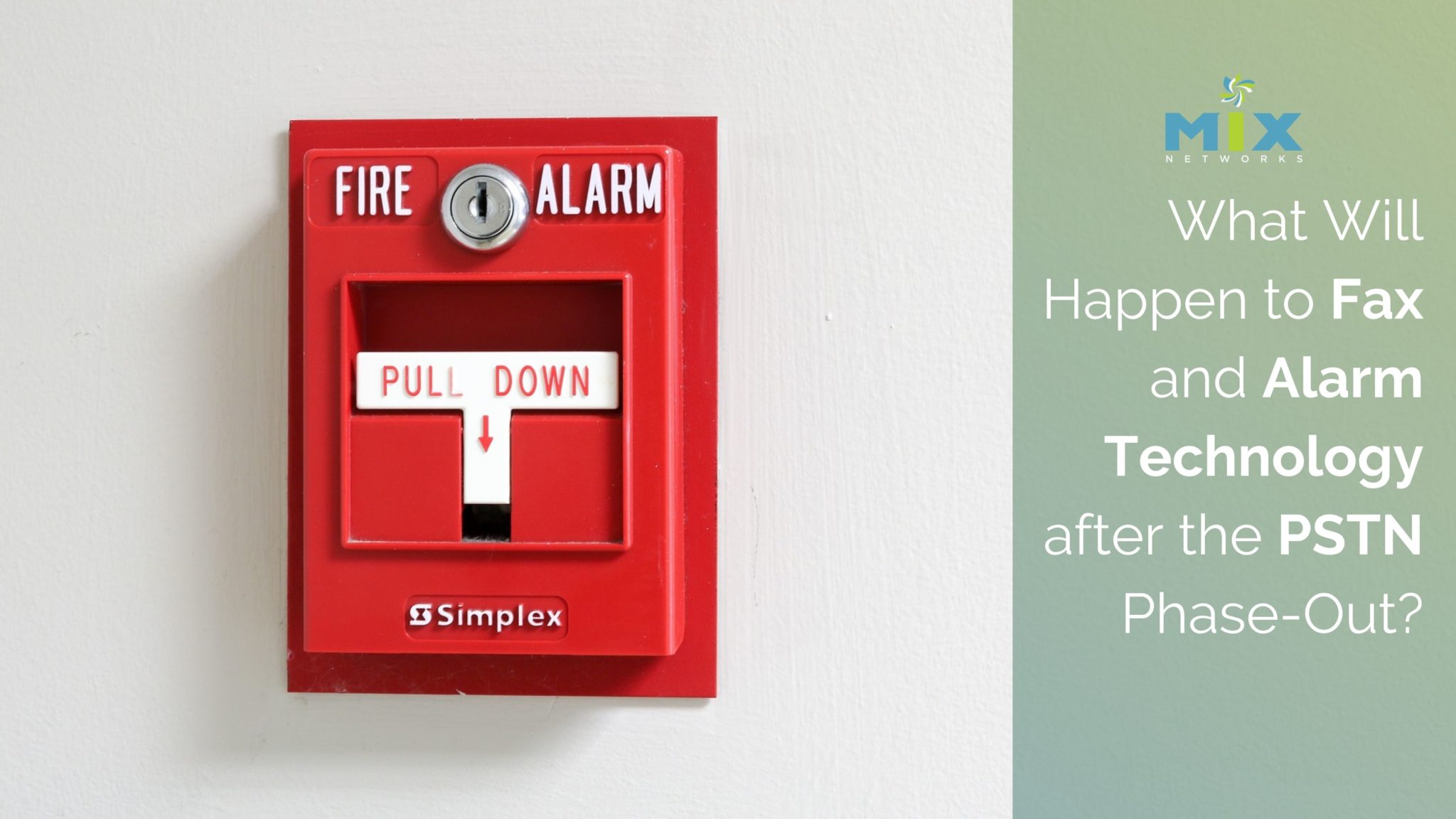What Will Happen to Fax and Alarm Technology After the PSTN Phase-Out
You may have already heard the news, but traditional copper lines are fading into the past and will no longer be supported by any of the carriers of last resort. If you are one of the 24% of businesses still relying on the copper POTS lines of the PSTN, then you have some decisions to make.
The death of the PSTN can have significant ramifications for the majority of your basic business needs. While for the majority, voice communications will be easily shifted to voice over internet protocol (VoIP), the transition is a bit more complicated for fax and alarm monitoring.
Why has fax and alarm technology not kept up with the changing times?
With all the chatter in voice communications over the replacement of the plain old telephone service (POTS Lines) with VoIP and the cost savings and advanced features, it leads one to question: why are fax lines and alarm monitoring still relying solely on POTS Lines for communication? If VoIP is as good as the enthusiasts claim, why isn’t it widely adopted in other communication needs?
The answer is complicated.
The same way VoIP, hosted PBX, and cloud solutions struggled to gain mainstream acceptance, so has fax and alarm monitoring lines. A combination of an inability of fax messages to accurately send and receive digital packets and end-users resistance to adopt newer technology has kept manufacturers from going all-in with an effort to modernize the older technology.
Compliance factors into the challenge as well. The healthcare and legal industries are still required by law to use analog VoIP solutions due to a decreased risk of interception during transmission. Prescriptions are still frequently faxed between doctors and pharmacists, and this does not appear to be changing any time soon.
With fire alarm regulations implicitly denying the use of VoIP to transmit alarm signals, manufacturers of alarm panels have taken to adding LTE, or cellular, communications capabilities into their panels to bypass the traditional phone line.
But if the analog lines of the PSTN are being phased out, with some locations already experiencing the complete degradation of the copper lines and the carriers refusing to fix those lines so they can continue with the service they are used to, or the significant increase in fees to continue to use those lines, how can you keep these solutions running and compliant without draining your business of vital resources?
When significant changes, such as the shut down of the PSTN, occur, end-user businesses are usually the ones who have to pay, either in increased subscription fees or the extraordinary costs to upgrade equipment. But what if there was a device that could sit between the older, POTS Line technology and the newer VoIP and LTE communications lines, effectively bridging the gap between the old and the new?
If you’ve landed on this page, chances are you have been asking the same question. And you were not the only one.
Automation, Compliance Come Together in DataRemote’s POTS IN A BOX® Solution
DataRemote sat right where you are and asked the same questions. The results of their questions led to the creation of the POTS IN A BOX® (PIAB) solution that connects your analog fax machine and alarm panel to the newer communications paths that are quickly replacing the aging POTS lines. For a fraction of the cost of a full rip and replace, the PIAB brings the old together with the new.
Since the PIAB is considered an Information Technology Device and NOT a Telecommunications or Network Infrastructure device, it falls under the UL listing 60950-1 which is derived from the American National Standards Institute (ANSI) safety standard for Information Technology Equipment (ITE), it is not governed by the NFPA 72 or UL 864. So not only does the PIAB solve the technology issue, but it also aids in maintaining compliance within your alarm systems.
Additionally, the PIAB is essentially “plug-and-play,” meaning it automatically detects the protocol in use by your particular alarm solution and auto sets itself to communicate within that protocol. By automating this process, you not only save in equipment costs but also installation costs as the installer no longer is required to know the specifics of the protocol in use by your alarm system.
Not only is the PIAB automated for the alarm installation, but it enables flawless faxing communications between your analog faxing device and VoIP communications lines. Traditionally, attempting to send faxes over VoIP lines has been challenging and with high failure rates. So much so that manufacturers just created ways around by scanning and using e-mail by fax. The PIAB essentially replaces the plain old telephone system lines, enabling life to roll on as if they still are in use.
Don’t wait until you are served notices that your copper lines are being shut down. Start here today.
Read more:








